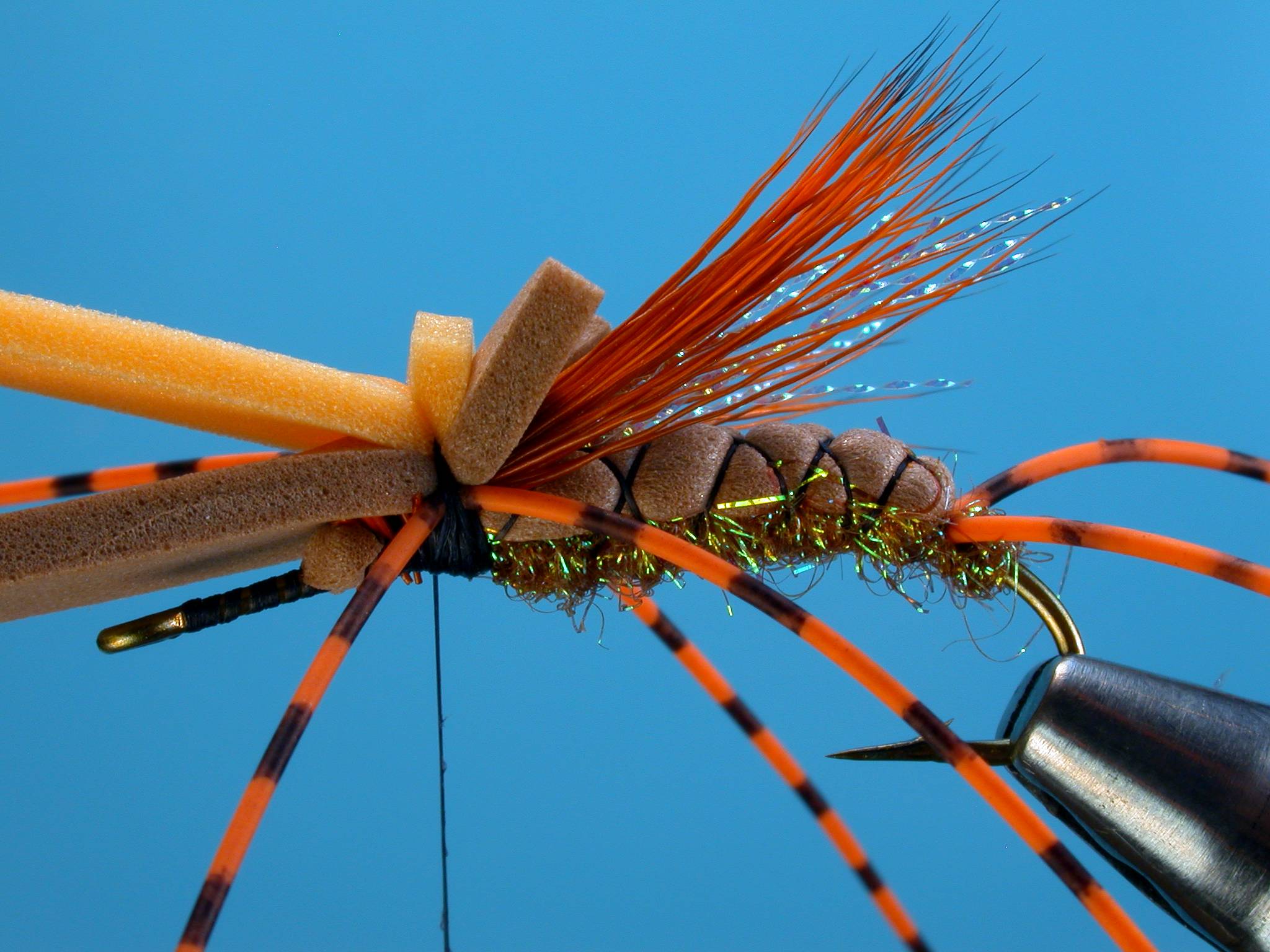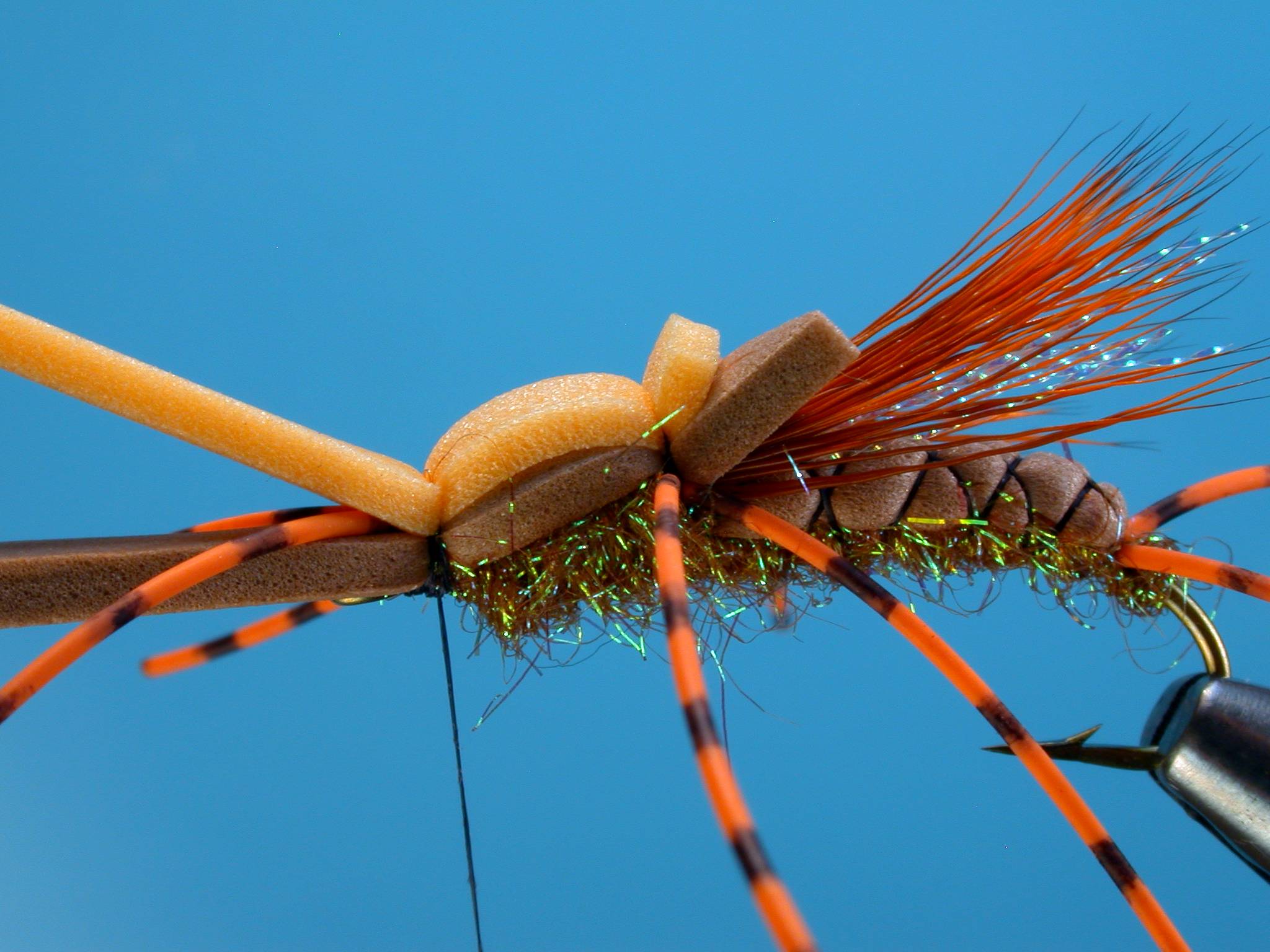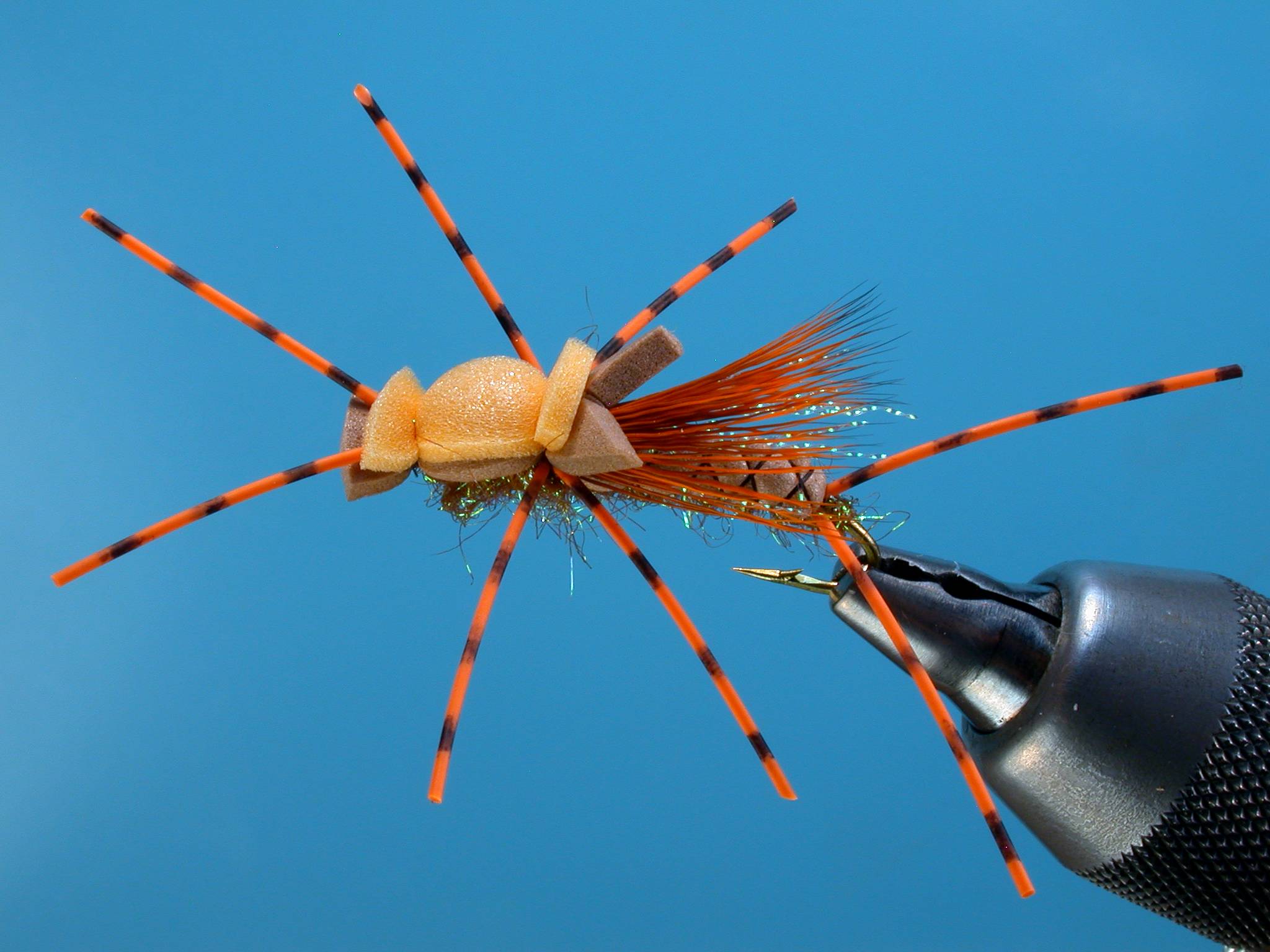This super cool stonefly pattern comes from Andrew Grillos and is a great pattern to match either Golden Stones or the larger Pteranarcys when tied in the right colors. Andrew is a great fly designer and has a ton of good stuff so keep an eye out for more.
Materials Needed:
Hook: TMC 200R #6-12
Thread: Black 3/0 Monocord
Tail, Legs, and Antennae: Medium Orange Barred Rubber Legs
Overbody: Cinnamon Thin Fly Foam, 2mm
Abdomen and Thorax: Rusty Brown Ice Dub
Underwing: Pearl Midge Flash
Overwing: Orange Dyed Cow Elk or Deer
Indicator: 1.5 mm Orange Fly Foam
Step 1
Begin by dressing the hook shank with thread and dubbing a small ball of Ice Dubbing directly just behind the hook barb. Tie in a doubled over a length of orange barred rubber legs at about the hook point and wrap back over it to the base of the ball forming a well-split tail. Cut a strip of cinnamon colored 2mm foam that is about as wide as the hook gap. Trim one end to a long taper as shown.

Step 2
Tie the foam in by its pointed tip at the 2/3rds point and wrap back over it to the base of the tails. Be sure to go all the way back to the tails and not to leave any bare thread between the foam and the tail. By the time you reach the base of the tail, the tapered section of foam should be used up and back to hook gap width at the bend.

Step 3
Dub a slightly tapered abdomen from the bend of the hook up to the two-thirds point. Pull the strip of foam tightly over the top of the dubbed abdomen and anchor it down with a few tight turns of thread at the front.

Step 4
Spiral wrap the thread in tight, evenly spaced turns back over the foam to the bend of the hook then spiral the thread forward again forming Xs along the top of the foam strip.

Step 5
Clip the remaining foam and build a short thread base over the stub end at the front of the body. Double over 4-6 strands of midge flash and tie them in at the front of the foam body. The flash should extend to about the end of the body. Cut, clean and stack a small clump of dyed elk or deer hair. Measure it from the front of the body to the bend of the hook and tie it in on top of the hook at the front of the body. Clip the butt ends flush.

Step 6
Now cut a slightly wider strip of cinnamon colored foam and notch the end. Tie the notched end of the foam in at the base of the wing with two stacked wraps of thread then tie in an equal width piece of orange 1.5mm foam right on top of it with an additional two wraps of thread.

Step 7
Tie in a piece of orange barred rubber legs on each side of the fly at the center of their length using one tight turn of thread for each side. Be careful of creating too much bulk as there are a lot of materials tied in all at one point here.

Step 8
Dub the thread with more Ice Dubbing, pull the foam and legs back out of the way and dub a pronounced thorax up to the index point. Make sure to wrap the dubbing tightly up against the base of the foam at the 2/3rds point to eliminate any spacing between the abdomen and thorax. Make a solid thread base behind the hook eye as a foundation for the foam tie off, then pull the strip of cinnamon foam forward over the top of the dubbed thorax and tie it down behind the hook eye.

Step 9
Tie in a single strand of orange barred rubber legs right on top of the foam tie off with a pair of X-wraps.

Step 10
Fold the orange foam forward and tie it down on top of the cinnamon foam and antennae strands. Lift all the foam and rubber legs up and back, bring the thread to just behind the hook eye and build a smooth thread head. Whip finish and clip the thread.

Step 11
Trim the cinnamon foam at the front of the hook to a short but apparent stub, and then trim the orange foam just slightly shorter. Trim the legs, tail, and antennae to about 2/3rds of a shank length. Add a drop of head cement to the thread head as well as to the leg tie down area on each side of the thorax.

